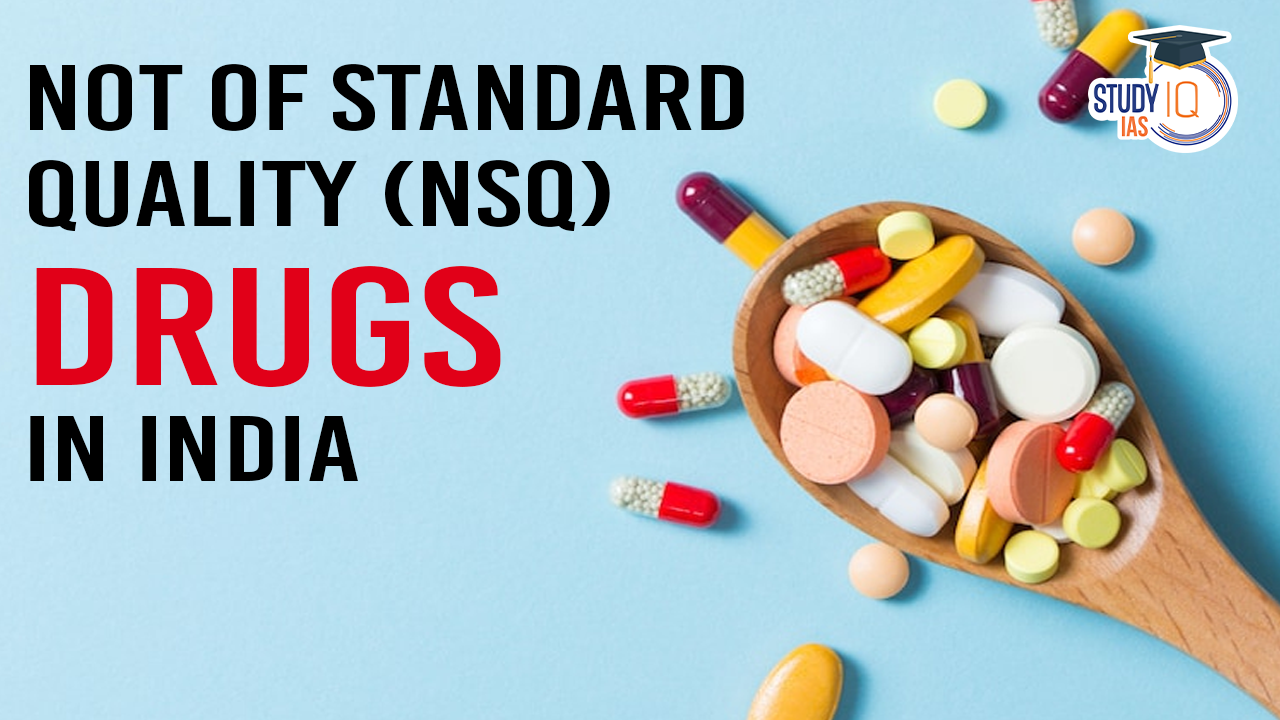Table of Contents
What was the recent incident?
Five young mothers in Ballari district, Karnataka, allegedly died due to contaminated drugs manufactured by a pharmaceutical company in West Bengal.
Challenges with the Current Regulatory Framework
- Fragmented Regulatory Authority: Under the Drugs and Cosmetics Act, 1940, pharmaceutical companies can sell their products across India based on state-level licenses. This means that:
- A pharmaceutical company licensed in one state can distribute its drugs nationwide without undergoing inspections by other states’ drug regulators.
- States like Karnataka lack the authority to prevent the sale of substandard drugs manufactured in other states, leading to a flood of NSQ products in their markets.
- Eg., Data from Karnataka’s drug laboratories shows that out of 894 samples tested over three years, 601 samples (approximately 67%) that failed quality tests originated from manufacturers outside Karnataka. This indicates a significant reliance on external states for drug quality assurance.
- Inefficient Legal Recourse: The primary legal recourse available to state authorities is criminal prosecution against manufacturers of NSQ drugs. However:
- Criminal cases can take years to resolve, during which time the offending company may continue operations unimpeded.
- Only the drug inspectors in the home state have the power to suspend or revoke manufacturing licenses, limiting immediate action against harmful products.
- Lack of Information Sharing: There is currently no centralized database for drug testing results or inspection reports, which hampers effective regulatory oversight. The absence of such a system leads to:
- The difficulty for state inspectors and procurement agencies in verifying the quality and history of pharmaceutical manufacturers outside their jurisdiction.
- Procurement decisions often rely solely on manufacturers’ claims without independent verification.
Proposed Solutions
- Promoting Information Sharing: Establish a centralised database for:
- Drug test results from all central and state drug testing laboratories.
- Inspection reports and licensing details of manufacturers across states.
- Benefits:
- Helps drug inspectors and procurement officials track the history of pharmaceutical companies.
- Enables risk-based enforcement and procurement decisions.
- Example: Helps avoid scandals like the one in Maharashtra, where spurious antibiotics were sold to a public hospital.
- Procurement agencies like the Karnataka State Medical Supplies Corporation Ltd. (KSMSCL) could use this database to verify pharmaceutical companies’ antecedents.
- Creating a Blacklist Register: Union Ministry of Health should create a central register of pharmaceutical companies blacklisted for supplying NSQ drugs.
- Benefits: Helps procurement agencies identify and avoid dealing with unreliable suppliers.
- Empowering States with Regulatory Powers: Allow states to block out-of-state manufacturers under investigation for serious adverse drug events.
- Manufacturers should prove rectification before resuming sales.
- Amendment: Requires amendment of the Drugs and Cosmetics Act, 1940, which is central legislation.
- Legislative reform must be initiated by the Union Health Ministry, with Karnataka supporting such measures.
Impact of the Proposed Reforms
- Enhanced public health safety through stricter enforcement.
- Improved decision-making for procurement agencies like KSMSCL.
- Weeding out unreliable pharmaceutical players from the market.
- Ensuring a more robust and transparent regulatory framework for drug manufacturing and distribution in India.


 Nipah Virus (NiV): Structure, Testing Me...
Nipah Virus (NiV): Structure, Testing Me...
 What is Ham Radio and its Purpose?
What is Ham Radio and its Purpose?
 INS Udaygiri, Key Features, Capabilities...
INS Udaygiri, Key Features, Capabilities...





















